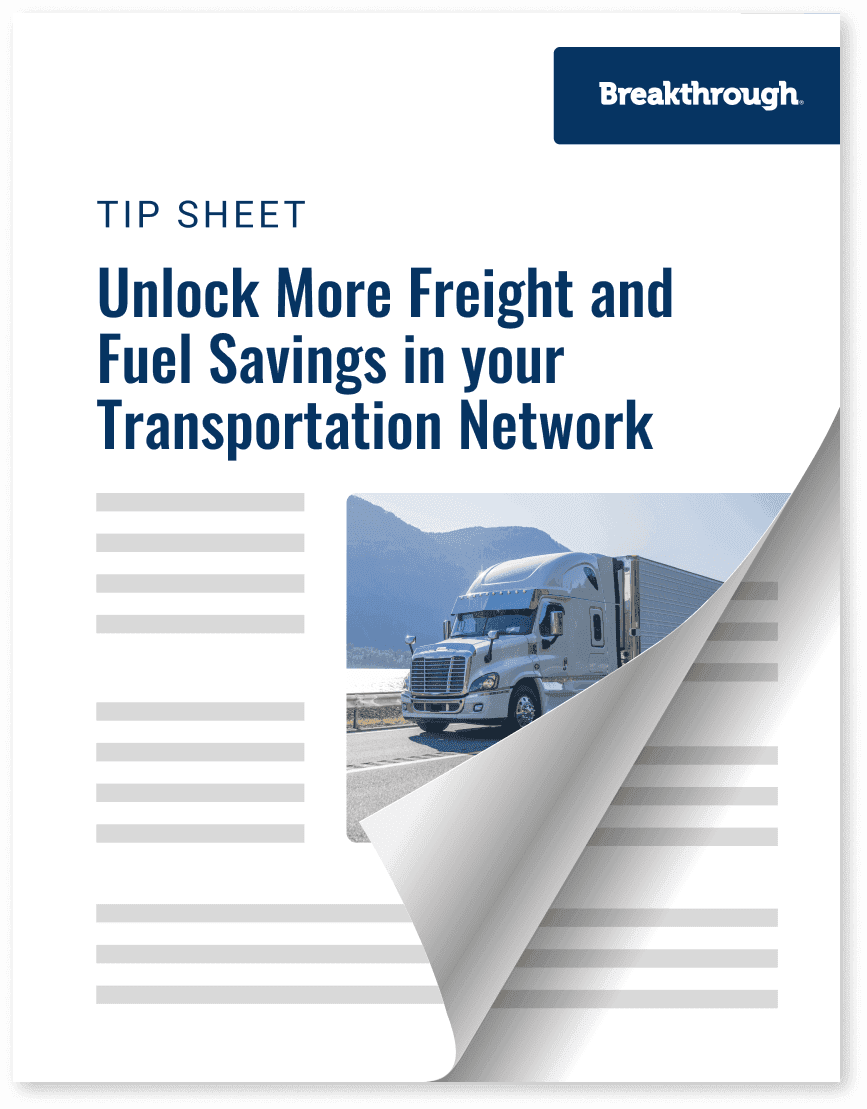Unlock More Freight & Fuel Savings in your Transportation Network

Trending
Top Posts
Market Events
Geopolitical Risks: Navigating Volatility in Energy Markets
4 min read
October 18, 2024
Sustainability and Tech
What Is Logistics Transportation Management? 4 Advantages for Success
4 min read
October 15, 2024
Sustainability and Tech
AI in Logistics: How Shippers Can Uncover Freight Efficiencies
4 min read
October 14, 2024

9 min read
March 9, 2023

Share:
Since Joe Biden took office, the Biden administration has called for aggressive economywide emissions reductions. From setting a goal of net-zero greenhouse gas emissions by 2050 with an interim goal of at least 50% emissions reduction by 2030, to advocating for holistic approaches to achieve such aims, his agenda is ambitious. With the passage of the Infrastructure Investment and Jobs Act (IIJA), also known as the Bipartisan Infrastructure Law, and the Inflation Reduction Act (IRA), Congress has provided crucial funding and new federal programs to address the multi-faceted challenges and opportunities of aggressive economywide decarbonization. The wide-ranging programs and investments included in IIJA and IRA are expected to lower economywide emissions by more than 40% by 2030 (relative to 2005 levels).
These two bills have resounding implications for the transportation sector. The Biden administration is reimaging how transportation could better serve communities and the greater economy, while also enabling transportation innovation.
With the Biden administration’s emissions reduction objectives as the guiding structure and the IIJA and IRA as the key building blocks, a Transportation Decarbonization Blueprint (Blueprint) was approved in winter 2022. The Blueprint provides an aspirational framework for achieving the Biden administration’s aggressive emissions reduction targets in the transportation sector.
Most notably for shippers and carriers, a key pillar of the Blueprint is the aim to transition to zero emission vehicles and fuels such as clean electricity, sustainable biofuels and e-fuels, and clean hydrogen. The Blueprint acknowledges the diversity and difficulties involved in decarbonizing medium- and heavy-duty trucks, freight rail, maritime shipping, and aviation; therefore, both public and private investments will be important to spur the development, pilot demonstration, and adoption of innovative zero emission fuels.
Of the $863.7 billion in funding available through the IIJA, over 65% – $590.7 billion – is specifically for transportation, particularly transportation infrastructure. The focus of this funding is on enabling modernization and emissions reduction across transportation modes. Here is the transportation funding breakdown across five fiscal years:
Highlighted below are key programs and funding opportunities available within the IIJA for eligible states, local governments, and other public sector entities. Although the private sector cannot be a direct recipient of most of these programs, there may be the opportunity to execute contracted work on behalf of the public sector.
Some of the funding in the IIJA is “authorized” which means that it was not made immediately available through the IIJA and will require Congressional action to appropriate further funds. Authorized funds are included in separate sections below.
$8 billion for Nationally Significant Multimodal Freight and Highway Program
$7.2 billion for National Highway Freight Program
$6.4 billion for Carbon Reduction Program
$2.5 billion for Charging and Fueling Infrastructure
$1.3 billion for Transportation Infrastructure Finance and Innovation Program
$400 million for the Reduction of Truck Emissions at Port Facilities
Authorized Funding – Dependent on Future Federal Appropriations
$25 million for Emerging Technology Research Pilot Program
$7.5 billion for Local and Regional Project Assistance, also known as RAISE Grants
$5 billion for National Infrastructure Project Assistance Grants (with another $5 billion over five years authorized)
Authorized Funding – Dependent on Future Federal Appropriations
About $25 million for Multi-state Freight Corridor Planning
About $19 million for National Multimodal Cooperative Freight Research Program
$2.3 billion for Maritime Administration Port Infrastructure Development Program
$5 billion for Consolidated Rail Infrastructure and Safety Improvement Grants
$3 billion for a Railroad Crossing Elimination Program
About $55 billion for the Advanced Technology Vehicle Manufacturing (ATVM) Loan Program
To complement the IIJA, the IRA provides tax credits for the use of alternative energy and grants for investment in alternative energy infrastructure.
Tax Credits Available Through the IRA:
Grants Available Through the IRA:
The IIJA and IRA present a wealth of opportunities for stakeholders in the transportation sector to obtain federal funding, provide input to federal transportation and infrastructure planning, and benefit from economywide efforts to re-envision and support a more modernized and sustainable transportation sector.
Breakthrough’s CleanMile solution can suggest grants, partners, and options for a shipper’s or retailer’s transportation network, and thus help capitalize on the myriad opportunities created by the IIJA and IRA. Logistics professionals can make real progress toward decarbonizing transportation and contribute to their corporate sustainability goals.

4 min read
October 18, 2024
Explore how geopolitical tensions and hurricane season are driving energy market volatility in 2024, significantly impacting oil prices and routing guides.
Read more
4 min read
October 15, 2024
Discover the benefits of using a logistics transportation management provider to streamline operations, enhance visibility, and meet sustainability targets.
Read more
4 min read
October 14, 2024
Explore how AI in logistics is advancing the supply chain through route optimization, market forecasts, and benchmarking, providing shippers innovative solutions.
Read more